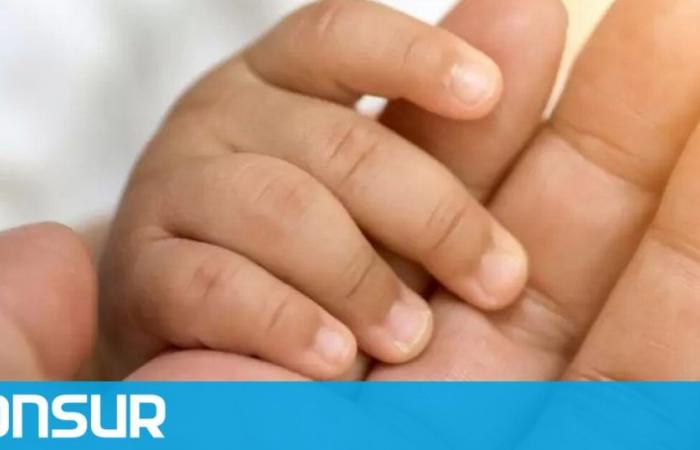
A report by the NGO ‘Argentinos por la Educación’ linked the sharp drop in the birth rate with an opportunity to improve the education system. In the country, the number of children born decreased by 36% between 2014 and 2022.
The number of live births fell from 777,012 in 2014 to 495,295 in the register eight years later. “This demographic trend is already impacting the education system, and a drop of around 31% in school enrolment is expected in the coming years,” the report states.
The report “Birth and the educational system” was prepared by Rafael Rofman (CIPPEC), together with Martín Nistal and Leyre Sáenz Guillén, from the Observatory of Argentines for Education.
The document addresses the implications of demographic change in the organization of the educational system by receiving fewer students due to fewer births. To do this, it uses official data on school enrollment, population and birth rates at the national level, and proposes public policy alternatives to take advantage of the decrease in births.
Alert for snowfall and winds of more than 100 km/h in Chubut: which cities will it affect
STRONG REDUCTION IN ENROLLMENT
“The impact of this drop in the birth rate is going to greatly reduce educational enrollment in the coming years and that is what presents an opportunity,” he said. Massimiliano Pisani, Government Relations analyst at the aforementioned NGOin dialogue with News 2.0.
“As a consequence, we will have fewer students and, for the installed capacity of infrastructure, teachers, and educators, this would mean an opportunity to advance in improving learning, which is a problem that we have in the field of education, such as the fact that in every two children in Argentina, one does not understand what he reads.”
A family from Comodoro was lost with a two-year-old child in the middle of the snow storm in Patagonia
From perspective, by sustaining the same amount of resources for education, the quality would improve because it would be distributed among a smaller number of students. The risk that arises is that, based on lower enrollment, States will also reduce budgetary resources.
“The impact of the lower birth rate is that in a few years we will have fewer children in the classrooms,” Pisani added. The question that arises from this ‘demographic bonus’ is ‘how are we going to take advantage of it?’ There are some lines that we propose in the report.”
One of the alternatives would be to reduce the number of students per classroom, “so that teachers can give better classes, that is, so that there is a more appropriate proportion of teachers per class.”
The two cheapest ski centers in Patagonia: Which are they and how much does the pass cost?
Another way, Pisani added, ““It is to maintain the same rate, but to have fewer teachers in the classroom, so that it can be used for tutoring.”
And a third option, according to the specialist, is to establish rotating training for the same teaching staff.
“What we see is that there is an opportunity and we want to strengthen the system, so that in educational policy we can improve learning, which is one of the outstanding debts that the country has.”
IN CHUBUT THERE WILL BE AN AVERAGE OF 14 STUDENTS PER CLASSROOM IN 2027
In the regional distribution of the report, it is observed that In Chubut, the drop in the birth rate is slightly above the national averagesince in this province births fell by 38% in the 8-year period.
Violence in Comodoro: a young woman ended up with her face disfigured outside a bowling alley
“The data from 2019, which can be brought up to today, show that in first grade there was an average of 22 students per classroom and what we are projecting is that by 2027 that number will be reduced to 14, that is, a fairly important difference. in a few years”.
Pisani also acknowledged that the birth rate is declining in many countries around the world, but in Argentina it is happening at an even faster pace.
“In the rest of the countries the decline is somewhat more gradual, but in Argentina the fall is abrupt -he compared-, so the impact will be noticed in a few years, when we will have a very big difference in educational enrollment. It is good that politics takes this into account and prepares to improve education.”
The family of the missing man in Comodoro suspects that he is being kidnapped
The specialist warned that it is necessary to anticipate this context, since otherwise those who govern will find themselves with the same allocated resources and a lower demand, which should lead to the best decisions being made to improve the meager learning results.
THE ONES THAT FELL THE MOST
The biggest declines were in Tierra del Fuego (-49%), Jujuy (-44%) and CABA (-44%). On the other hand, the smallest falls occurred in Chaco (-21%), Santa Fe (-28%) and Misiones (-29%). The greatest decreases are observed in adolescent women and young people under 25 years of age: among them, the drop is from 40% to 60%.
On the other hand, the smallest falls occurred in Chaco (-21%), Santa Fe (-28%) and Misiones (-29%).
This demographic trend has an impact on the enrollment of students in the educational system. Taking as a reference the number of people born between 2006 and 2022, it is estimated that primary enrollment will fall by approximately 28%. This drop is even more abrupt between 2014 and 2022, a period in which a drop of 31.4% in student enrollment is estimated.





